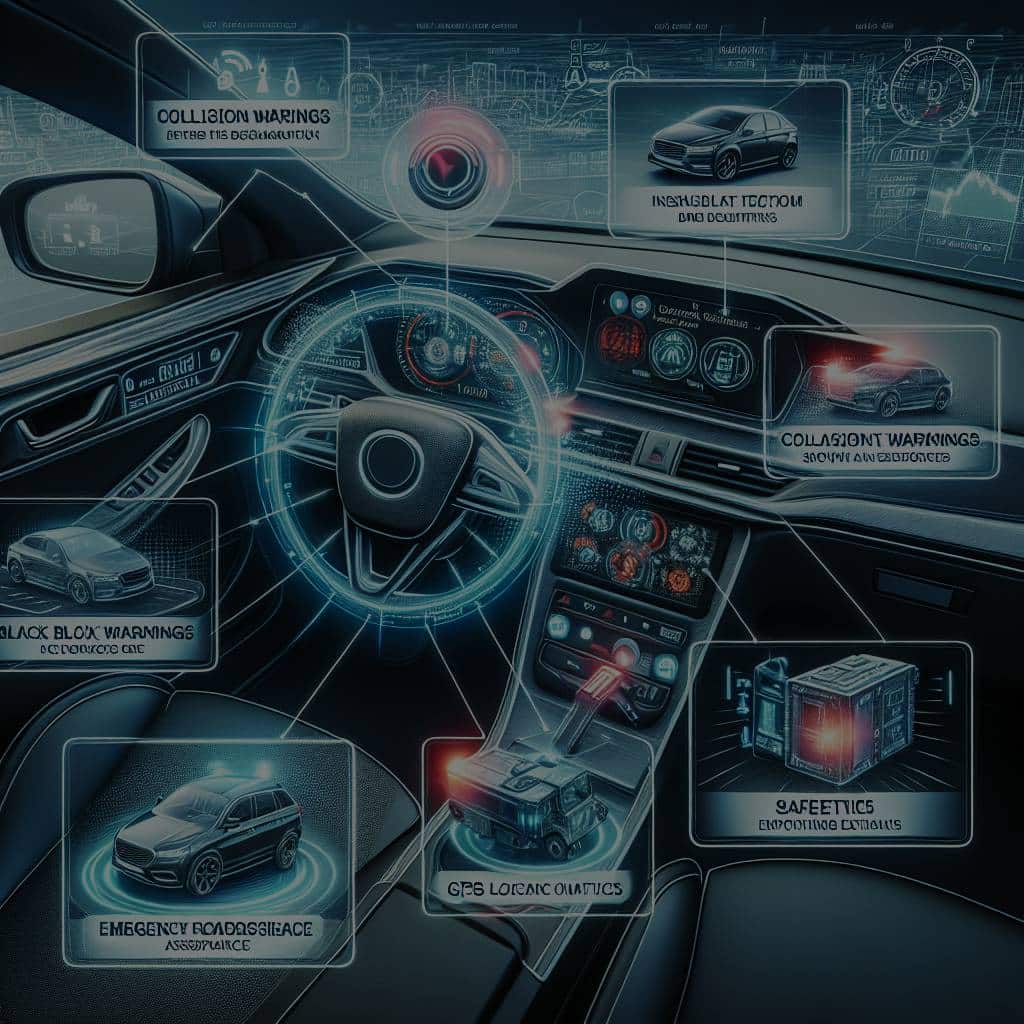How Are Advanced Telematics Systems Enhancing Vehicle Safety and Diagnostics?

In an age where digitization and automation are the norm, advanced telematics systems are making a significant difference in vehicle safety and diagnostics. These systems integrate the use of telecommunications and informatics to provide real-time data and information about vehicles. They have become an integral part of fleet management, ensuring safety, enhancing maintenance, improving driving behavior, and reducing fuel consumption. As you delve into this article, you will discover how these advanced telematics technology systems are revolutionizing the vehicle industry.
The Concept of Telematics in Vehicle Management
Telematics is a method that combines both telecommunications and informatics, hence the term telematics. It involves the use of technology to send, receive, and store information relating to remote objects, like vehicles in this case. This advanced system has found broad applications in vehicle management— from GPS tracking to data diagnostics and safety enhancement.
In parallel : Is AI Essential in Creating More Accurate Predictive Models for Stock Markets?
In the realm of fleet management, telematics devices collect data from various sources, including GPS systems and onboard diagnostics. This information is transmitted in real-time to a centralized management platform. Here, the data is analyzed and displayed in an actionable format, providing fleet managers with a comprehensive view of their vehicles’ operational status. The data collected from telematics systems includes vehicle location, fuel usage, driver behavior, and maintenance needs.
How Telematics Enhances Vehicle Safety
Safety is a top priority in managing vehicles, especially for fleet managers. Advanced telematics systems play a pivotal role in promoting vehicle safety. The technology provides data that helps to prevent accidents, protect drivers, and maintain the vehicles.
Also to see : Can AI-Enhanced Drones Streamline Search and Rescue Operations in Remote Locations?
For instance, GPS tracking provided by telematics devices helps manage the location of each vehicle in real-time. This feature is essential in ensuring the safety of drivers and the timely delivery of goods. If a vehicle deviates from its intended route or stops unexpectedly, alerts can be sent to the fleet manager, who can then take necessary action to address the situation.
Additionally, telematics can offer detailed insights into driver behavior, including speeding, hard braking, rapid acceleration, and idle times. When you can monitor your drivers’ habits, it allows you to address potentially dangerous driving habits promptly and provide necessary training or interventions to promote safer driving.
The Role of Telematics in Vehicle Diagnostics
When it comes to vehicle maintenance and diagnostics, advanced telematics systems are transforming the landscape. The technology can monitor various vehicle parameters like engine temperature, oil level, brake wear, tire pressure, and battery status in real-time.
By providing early warning signs of potential mechanical problems, telematics helps to prevent breakdowns and costly repairs. For instance, if the system detects an issue such as low oil pressure or high engine temperature, it alerts the fleet manager or vehicle owner in real-time, allowing them to take preventive action. This real-time diagnostic capability helps to minimize downtime and increase the lifespan of the vehicles.
Moreover, telematics can also generate maintenance reminders based on mileage, time, or specific vehicle conditions. This feature ensures that regular maintenance is carried out on time and that no crucial check-ups are missed.
Advanced Telematics and Fuel Management
Fuel management is another area where telematics is making a significant impact. Advanced telematics systems provide comprehensive data on fuel consumption, offering insights that can help manage fuel costs effectively.
For example, telematics can monitor and report on idling times, aggressive driving, and inefficient routes — all of which contribute to increased fuel consumption. By identifying these issues, fleet managers can take measures to reduce fuel waste, such as implementing more efficient routes or addressing driver behavior.
Moreover, the system can also detect fuel theft or leakage by monitoring fuel levels in real-time. Any significant drop in fuel levels that isn’t accounted for by vehicle use can trigger an alert, providing an additional layer of security and accountability.
Conclusion
With the continuous evolution of technology, the capabilities of telematics systems are becoming more sophisticated, and their benefits are becoming more significant. Through the provision of real-time data and advanced analytics, these systems are enhancing safety, improving diagnostics, and promoting efficient fuel use, among other benefits. As a result, they are becoming an indispensable tool in vehicle management, contributing to safer roads, more reliable vehicles, and more efficient operations.
Real-Time Tracking and Fleet Management Using Advanced Telematics
Fleet management is a major concern for many businesses today. Effective fleet management involves a myriad of tasks, including efficient routing, maintenance scheduling, fuel management, and more. Advanced telematics systems, with their real-time data and analytics, are proving to be invaluable tools in this domain.
These telematics devices are installed on each vehicle in the fleet. They collect a wide array of data, including GPS tracking information, driver behavior, and vehicle health stats. This data is then transmitted in real-time to a centralized management software. Fleet managers can analyze this data, track their vehicles, monitor driver behavior, and manage their fleet operations more efficiently.
For example, GPS tracking allows fleet managers to know the exact location of each vehicle in their fleet. This is crucial not just for security reasons, but also for ensuring optimal routing, timely delivery of goods, and minimizing idle times.
Furthermore, the driver behavior data collected by the telematics system can help identify any reckless or inefficient driving patterns. Such insights can be used to implement driver training programs, as well as impose stricter rules and regulations, which in turn promotes safer and more efficient driving.
Lastly, the vehicle health stats provided by telematics systems allow for better vehicle diagnostics and predictive maintenance. Early identification of potential mechanical issues can help prevent costly breakdowns and increase vehicle lifespan.
The Future of Vehicle Safety and Diagnostics with Advanced Telematics
As technology continues to evolve, so does the potential of advanced telematics. These systems are no longer just about collecting real-time data. They are moving towards predictive analytics, machine learning algorithms, and even integration with other smart technologies to further enhance vehicle safety, diagnostics, and fleet management.
In the future, telematics solutions may be able to predict potential accidents based on driver behavior and vehicle conditions, providing timely alerts to prevent these incidents. They may also be able to suggest optimal routes based on real-time traffic and weather conditions, further improving efficiency and fuel consumption.
Moreover, integration with other smart technologies could open up a world of possibilities. For instance, connecting advanced telematics with smart city infrastructure could allow for better traffic management and safer roads. Similarly, integration with smart home devices could enable automated garage opening or HVAC control based on vehicle proximity.
Conclusion
Advanced telematics systems are revolutionizing the way we approach vehicle safety and diagnostics. They offer unprecedented access to real-time data, provide crucial insights into driver behavior and vehicle health, and offer powerful tools for efficient fleet management.
As technology continues to advance, we can expect to see even more sophisticated telematics solutions, offering enhanced predictive capabilities and integration with other smart technologies. This will undoubtedly contribute towards safer roads, more reliable vehicles, and more efficient fleet operations. Whether for personal use or for managing a large fleet, the future of vehicle telematics promises to be exciting and transformative.
